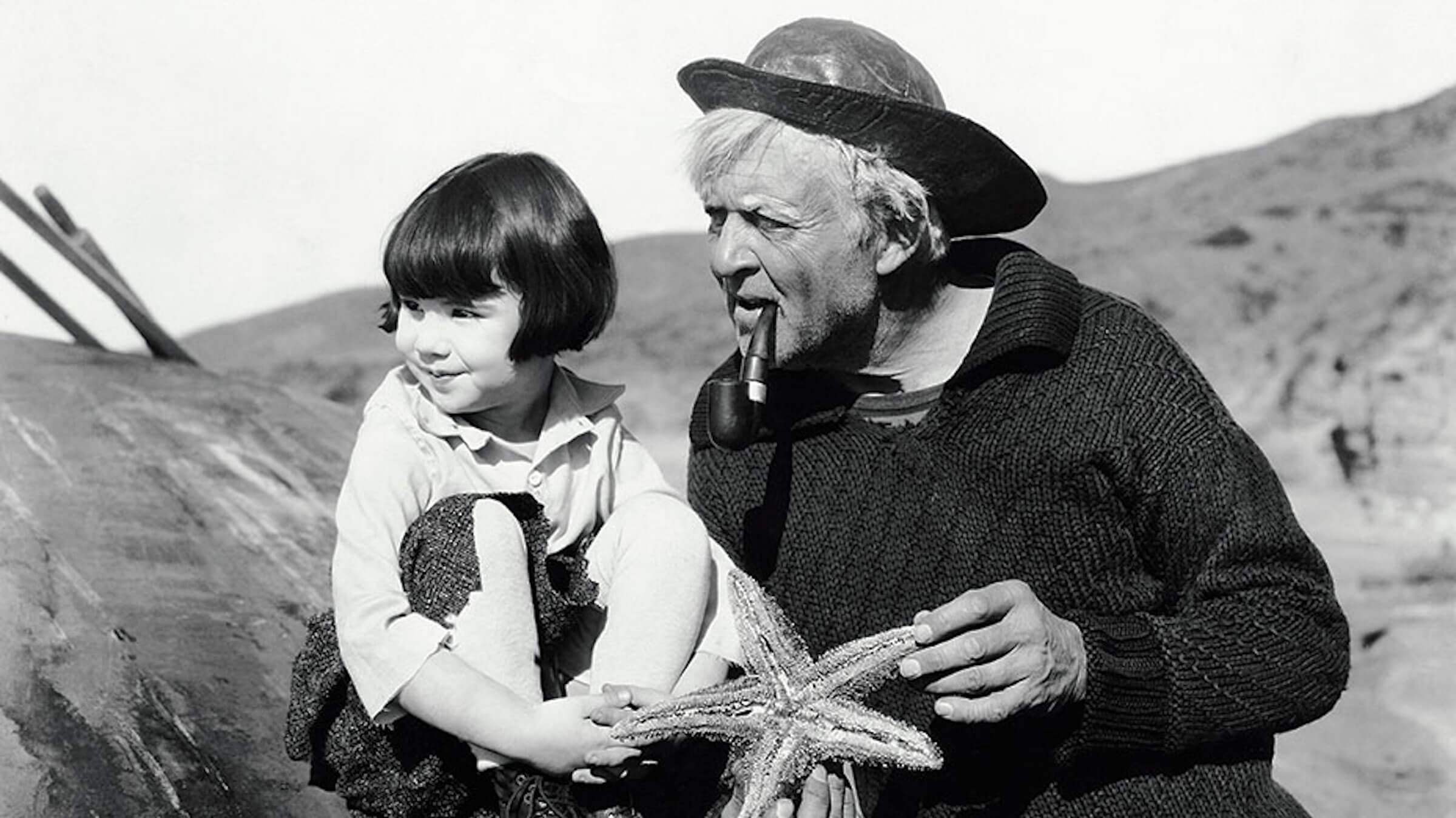A decade before Shirley Temple there was Baby Peggy, one of the biggest child stars of the silent era. Born Peggy-Jean Montgomery in 1918, she began her film career entirely by chance at just 19 months old. Her father Jack Montgomery, a former cowboy and horse trainer, moved his family to Los Angeles and found work as a stunt-double for western star Tom Mix. One day Peggy’s mother, with children in tow, visited Century Studios on Sunset Boulevard’s Poverty Row, and when director Fred Fishbach came across the dark-eyed, curiously self-possessed Peggy, he knew he had found his costar for Century’s own Brownie the Wonder Dog.
At the end of five days’ filming, Century Studios signed the toddler to a seven year, $300-a-month contract. Soon she began starring in her own Baby Peggy Comedies, an incredibly popular series of two-reelers that parodied fairy tales, novels, current Hollywood films, and grand opera.
Audiences marveled that two-and-a-half-year-old Baby Peggy, who played satirical adult roles, both male and female, was able to perform these parts, including takeoffs of Rudolph Valentino and Pola Negri. Her father, who had difficulty accepting that his baby daughter had become the family breadwinner, took credit for the Baby Peggy phenomenon. An expert trainer of horses and dogs, Jack Montgomery applied his belief in absolute obedience to his daughter. He insisted on supervising Peggy on the set, directing her with hand signals and spoken commands. Baby Peggy herself deserves credit for bringing her own instinctive touches to the performances.
Turning out these two-reelers, dubbed “Five-Day Wonders,” was not easy. Her eight-hour workday, six days a week, started at 7 a.m. with no time for the nap now required by California child labor laws. Scripts called for location shooting and increasingly put Baby Peggy in dangerous situations, from being dunked in ten-foot waves to nearly being tossed from a speeding truck. Surrounded only by adults, Peggy assumed that all children supported their parents, and by age three she sensed that the family’s fate—and improved lifestyle—depended on her. She viewed the child on-screen as a separate person, initiating a psychological detachment from Baby Peggy that endured until adulthood.
The Peggy-Jean Corporation moved to Universal Studios in 1922, and Peggy was guaranteed roles in feature-length films that emphasized melodrama over comedy. Her continuing box-office success put her in the same league as another contemporary child actor, Jackie Coogan.
In 1923, she became a “Million Dollar Baby” when producer Sol Lesser of Principal Pictures signed her to an extraordinary $1.5 million contract. With money and fame came personal appearances, magazine covers, international fan mail, Baby Peggy dolls, and Baby Peggy look-alike contests. In 1924, she was chosen as mascot for the Democratic National Convention and appeared at a rally in Madison Square Garden with Franklin Delano Roosevelt.
Captain January was the first film she made under the terms of her new contract; she starred in just one more feature for Sol Lesser, Helen’s Babies (1924), before her career took a series of disastrous turns. Her step-grandfather, who had also been her business manager, absconded with every penny of her earnings. Jack Montgomery’s bitter arguments with producers succeeded in getting Baby Peggy blacklisted from studios, and her last starring role, The April Fool (1926), was filmed on Poverty Row. Unable to relinquish their stake in Baby Peggy, her parents dragged her on an arduous vaudeville tour.
In the mid-1930s, Peggy enrolled in a school for professional movie children attended by child stars Judy Garland and Mickey Rooney and appeared in bit parts well into her teens under her full name, Peggy Montgomery. Never addicted to fame, she took advantage of hard times to escape her Baby Peggy alter ego. She discovered a love of writing and selected the new name of Diana for herself, because it sounded suitable for an adult with serious literary ambitions. She later added “Serra”—after Franciscan priest Junipero Serra—as her confirmation name.
Following an ill-fated marriage to a former child actor, she worked as a switchboard operator, freelance journalist and used-book clerk, and founded a greeting card company in Santa Barbara where she met and married artist Bob Cary. Deciding to reconcile with her past, she became a “film archaeologist,” authoring several notable books on silent film history, including Hollywood’s Children and The Hollywood Posse. Many of the Baby Peggy films, which number more than 40 shorts and nine features, have been lost. A few of her Century comedies survive in foreign archives and at the Museum of Modern Art in New York, and the Library of Congress has preserved Helen’s Babies and the print of Captain January being presented today. Two other features, The Family Secret and The April Fool, are commercially available from Grapevine Video.
Presented at SFSFF 2002 with live music by Jon Mirsalis

